Project Details
Case Study Description
Stratification and Density Measured Through Conductivity
In the field of geophysical fluid dynamics, stratification is a major factor in the physics of fluid motion. Most fluids contain components of different densities, which are organized by gravitational and buoyancy forces into stacks of increasing density. In order to simulate this stratification, Andrew Gonzales and Dr. Michael Burin, both of California State University, San Marcos, created an in-lab density gradient, using the ‘double tank’ method.
With this method, an increase in density will be reflected by a higher concentration of salt (NaCl), which can be measured based on the different rates of conductivity of the fluid at different depths. It is important to be able to create stratification in the controlled environment of the lab, because outside, in the field, the sheer number of variables present, along with this phenomenon, makes conducting tests very difficult.
The Double Tank Set-up
Gonzales and Burin employed a top-filled, forced-drain variation of the double tank method, using a gradient ranging from 0.01% concentration NaCL by weight, up to 1.0% concentration. Tank A was filled with 15L of saltwater at the lowest concentration rate (0.01%). Tank B was filled with 15L of saltwater at the highest concentration (1.0%). Two peristaltic pumps were deployed, with Pump A forcing water from Tank A into Tank B; and Pump B forcing the newly mixed water down into Tank C.
To generate the necessary linear gradient, the flow rates were maintained at a constant ratio of 1:2, with water from Tank A flowing into Tank B at 125mL/min and the resulting mixture flowing from Tank B into Tank C, at double that rate (250mL/min). With these flow rates, Tank C filled in 2 hours.
To ensure proper diffusion of the mixture (vital to achieving the desired stratification), the tube carrying the mixture ran through a sponge as it entered Tank C.
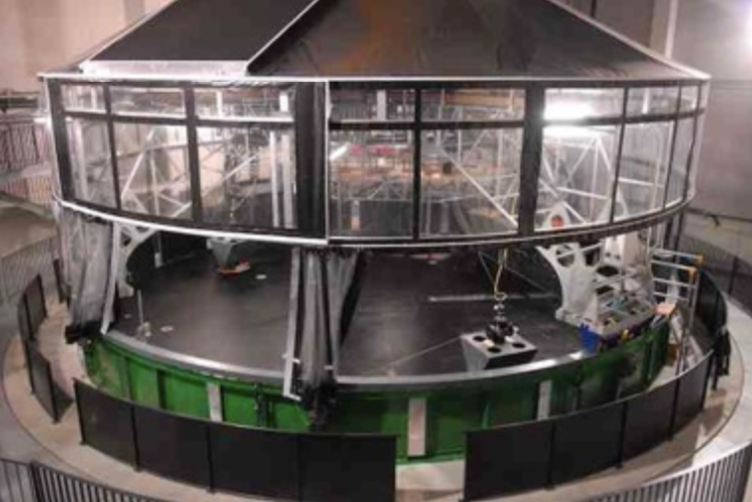
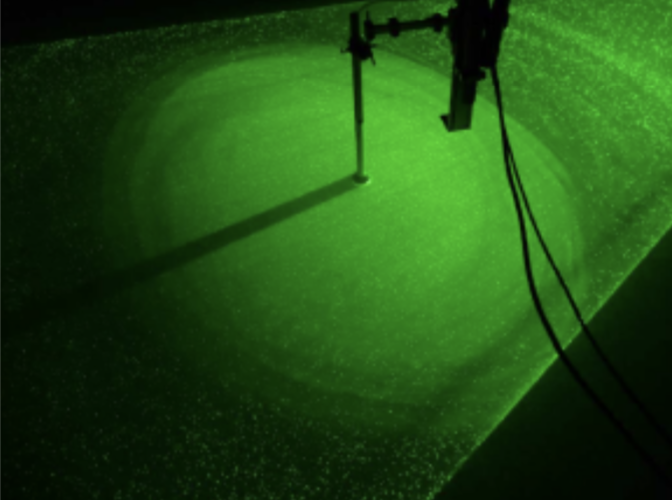
Recording Conductivity
To record conductivity, the team employed a set of three Model 125 Micro Scale Conductivity and Temperature Instruments from Precision Measurements Engineering.
Conductivity Increases With Depth
As demonstrated in the graphs below, the water grew warmer, denser, and more conductive with depth.
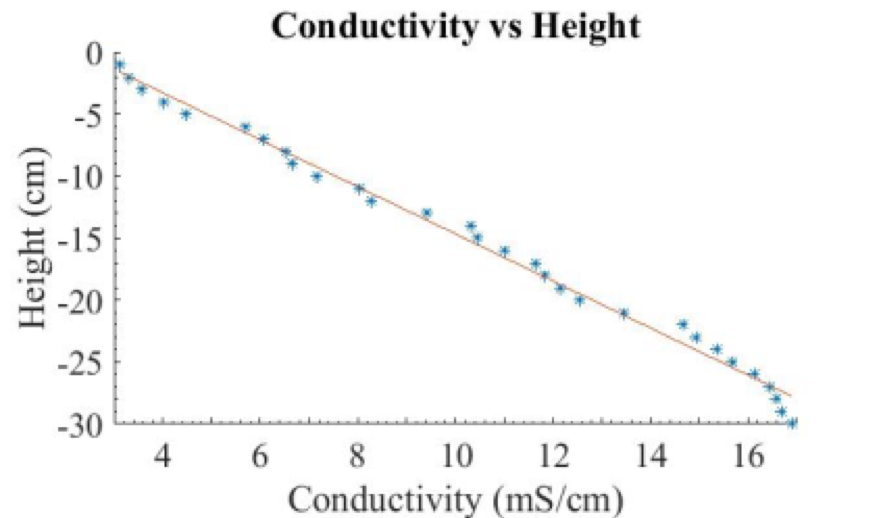
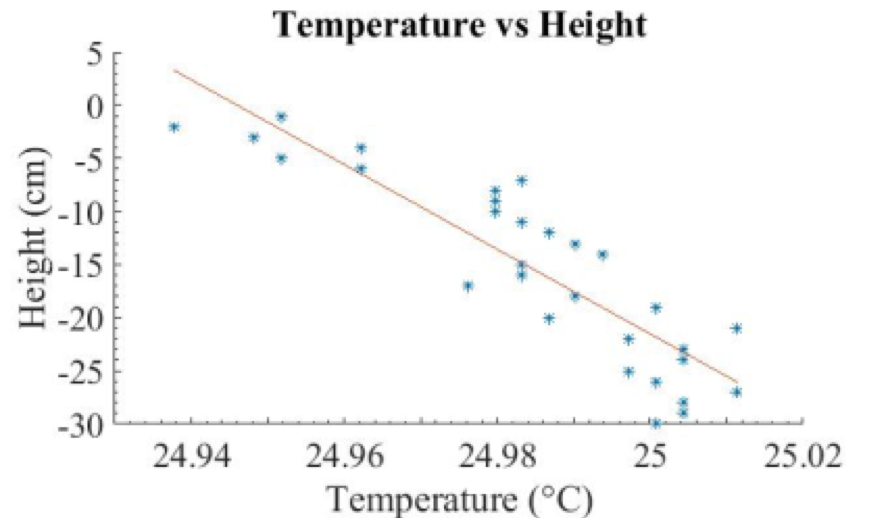
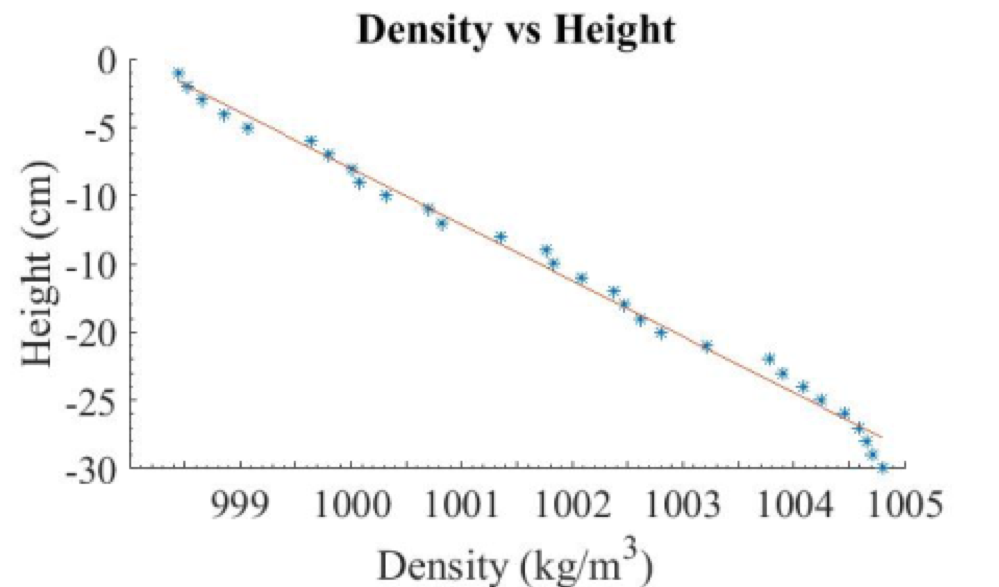
Product Description
The 125 Micro Scale Conductivity and Temperature Instrument is designed to measure the electrical conductivity and temperature of solutions containing conductive ions. This instrument presents two analog outputs, one linearly proportional to the solution conductivity and one non-linearly proportional to the solution’s temperature. The MSCTI makes rapid, small, spatial resolution measurements in laboratory situations.